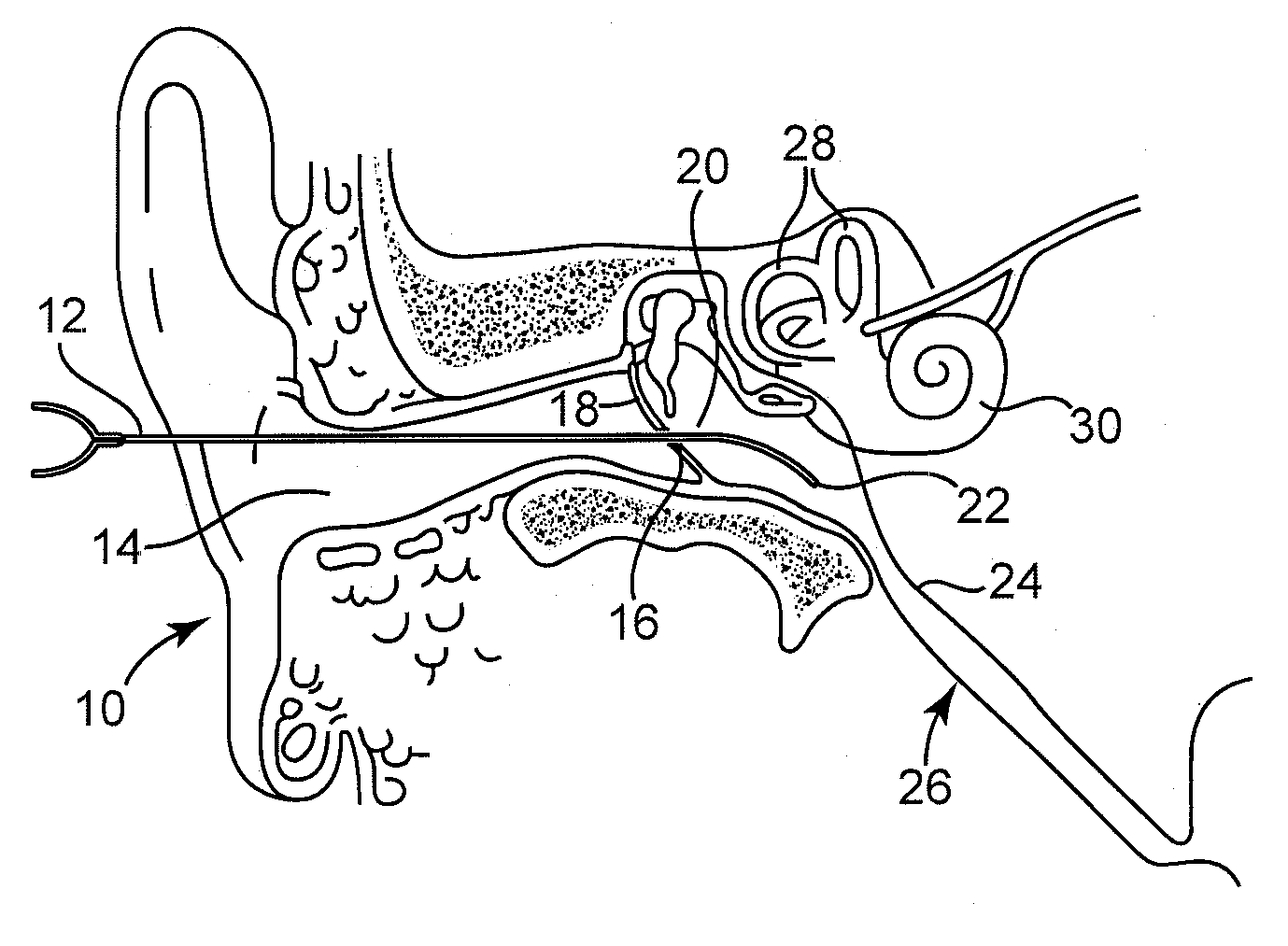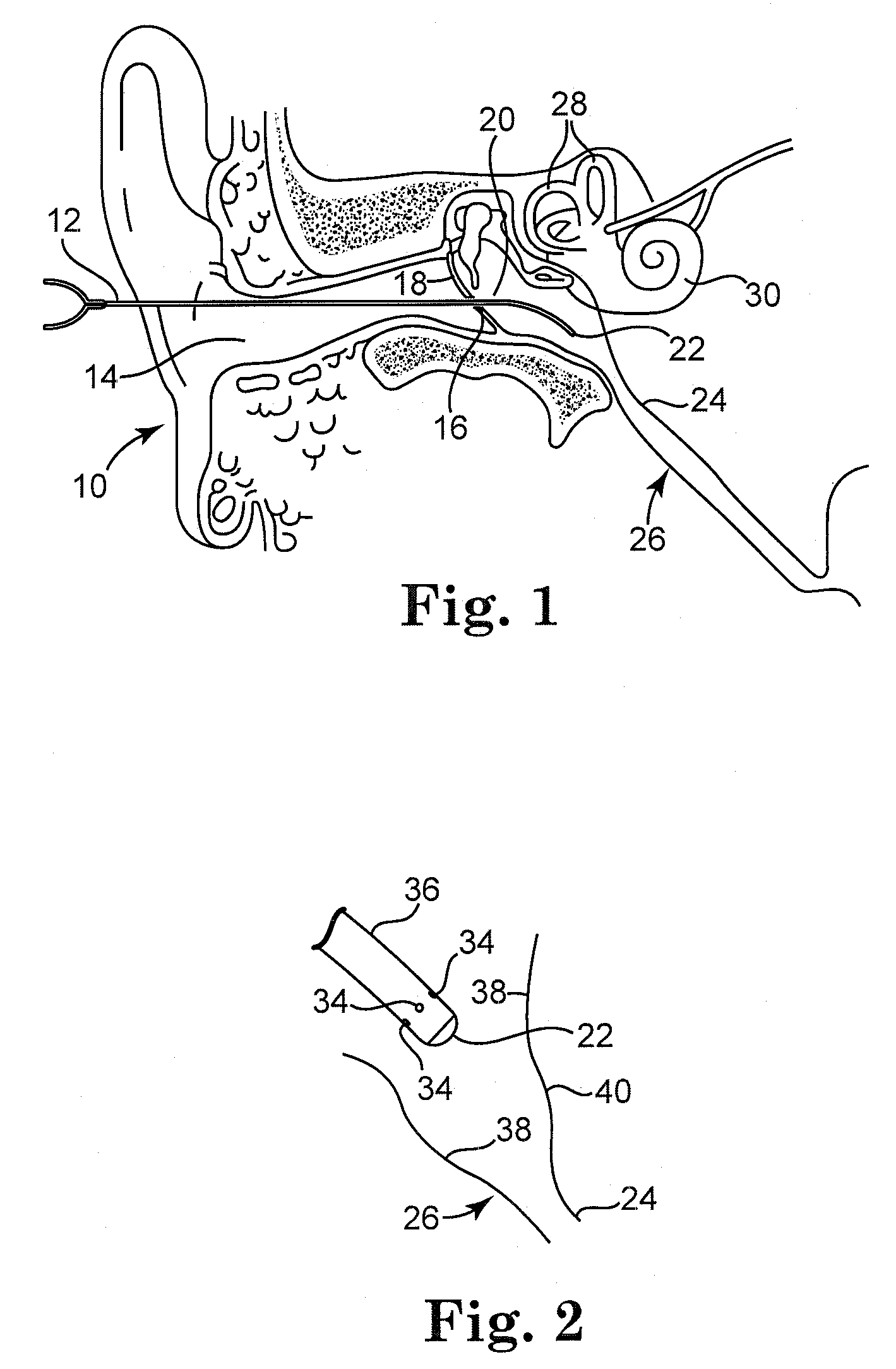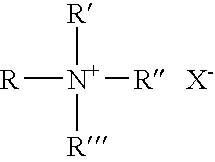Extracellular polysaccharide solvating system for treatment of bacterial ear conditions
a bacterial ear and bacterial technology, applied in the field of extracellular polysaccharide solvating system for treating bacterial ear conditions, can solve the problems of insufficient relief from chronic otitis media, poorly suited to treating delicate surfaces and fragile structures in the middle and inner ear, and achieve the effect of discouraging bacterial recolonization and biofilm reformation
- Summary
- Abstract
- Description
- Claims
- Application Information
AI Technical Summary
Benefits of technology
Problems solved by technology
Method used
Image
Examples
example 1
[0044]As a proxy for the S. aureus and P. aeruginosa bacteria that may be implicated in bacterial biofilms in the middle ear (other bacteria that may be implicated include S. pneumonia, H. influenzae and M. catarrhalis), bacterial isolates were recovered from the sinuses of patients with sinus disorders. Patients with cystic fibrosis or an underlying immunosuppressive disease (HIV infection, insulin-dependent diabetes mellitus, or renal disease) and patients who had taken antibiotics or oral prednisone in the previous month were excluded. All patients had refractory sinusitis, that is, persistent symptoms resistant to medical therapy despite having undergone technically successful functional endoscopic sinus surgery (FESS) for refractory chronic rhinosinusitis (CRS) with or without nasal polyposis. The occurrence of CRS was diagnosed in accordance with the 2003 American Academy of Otolaryngology-Head and Neck Surgery (AAO-HNS) guidelines set out in Benninger et al., “Adult chronic r...
example 2
[0052]The CAZS solvating system employed in Example 1 was modified by replacing some of the water with gallium nitrate so that the modified system contained 25% gallium nitrate. A Control solution containing 25% gallium nitrate in deionized water was also prepared. When evaluated using the static treatment technique of Example 1, administration of the gallium nitrate Control solution resulted in a 3.4 log reduction (average of 4 runs) in the number of S. aureus CFUs and a 4.1 log reduction (average of 3 runs) in the number of P. aeruginosa CFUs. Static administration of the solution containing CAZS and gallium nitrate resulted in a 5.2 log reduction (average of 2 runs) in the number of S. aureus CFUs and a 5.5 log reduction (average of 2 runs) in the number of P. aeruginosa CFUs.
PUM
| Property | Measurement | Unit |
|---|---|---|
| acidity | aaaaa | aaaaa |
| concentration | aaaaa | aaaaa |
| pH | aaaaa | aaaaa |
Abstract
Description
Claims
Application Information
 Login to View More
Login to View More - R&D
- Intellectual Property
- Life Sciences
- Materials
- Tech Scout
- Unparalleled Data Quality
- Higher Quality Content
- 60% Fewer Hallucinations
Browse by: Latest US Patents, China's latest patents, Technical Efficacy Thesaurus, Application Domain, Technology Topic, Popular Technical Reports.
© 2025 PatSnap. All rights reserved.Legal|Privacy policy|Modern Slavery Act Transparency Statement|Sitemap|About US| Contact US: help@patsnap.com



